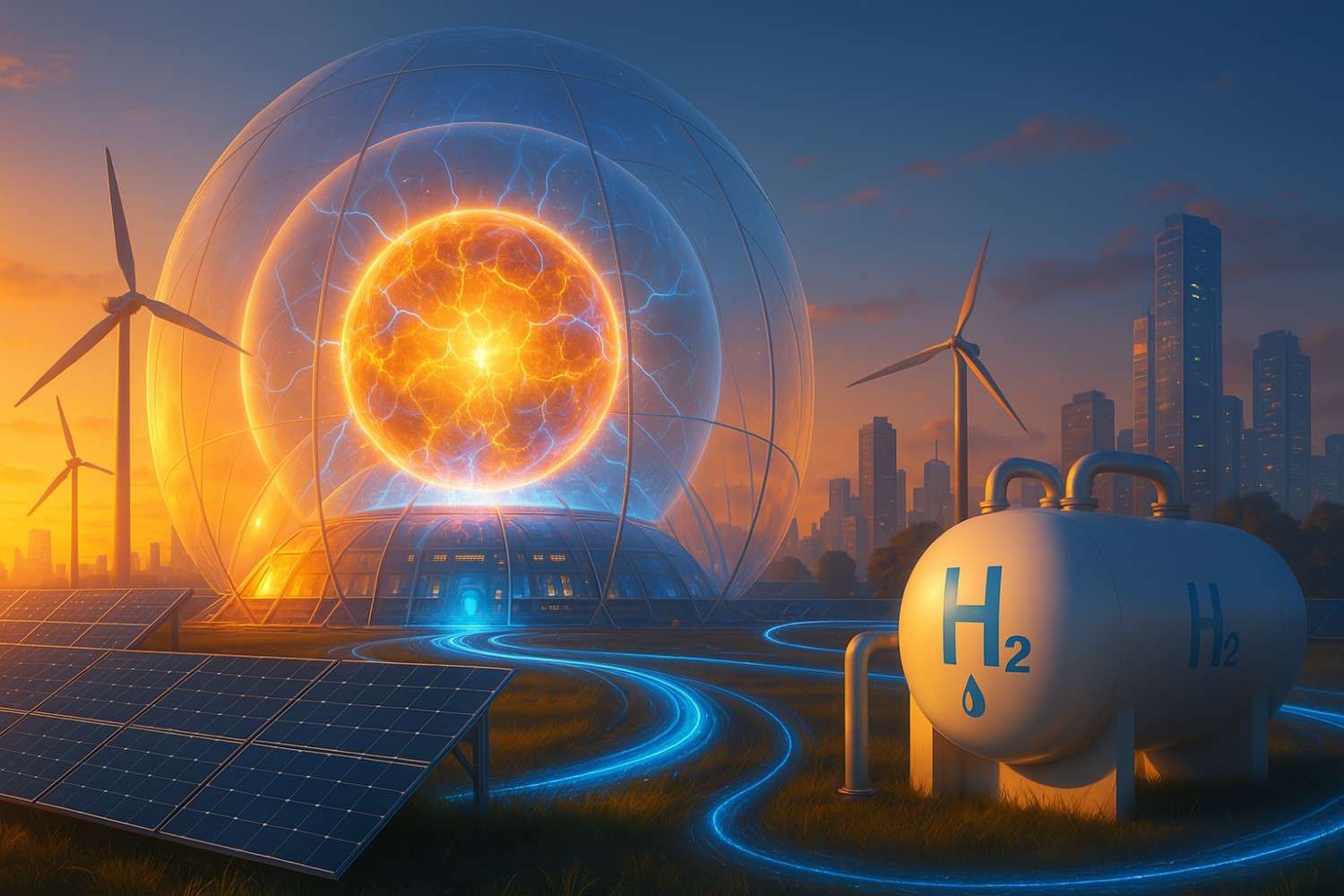Global urgency to combat climate change is pushing humanity to innovate rapidly in the realm of clean energy. From rooftops lined with solar panels to the promise of harnessing the power of stars through fusion, green technologies are redefining how we power our world. Let’s explore some of the most exciting and transformative new green energy solutions leading the way toward a sustainable future.
1. Next-Generation Solar Photovoltaics
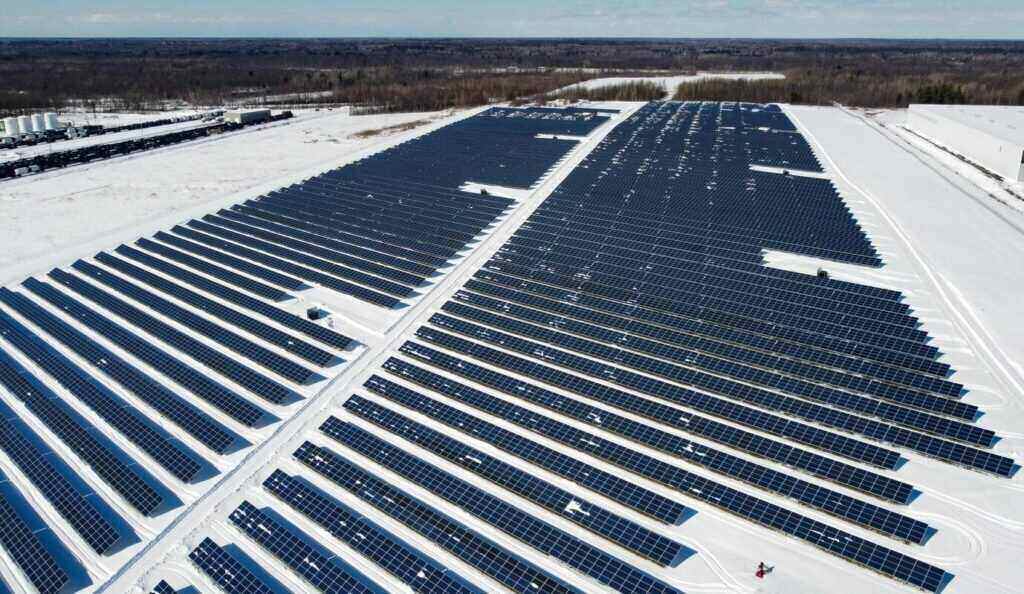
Solar power remains the poster child of renewable energy, but today’s innovations go far beyond conventional silicon panels. Newer materials like perovskites are revolutionizing solar cells by enabling higher efficiencies at lower costs. Unlike traditional silicon cells, perovskite solar cells can be flexible, lightweight, and even semi-transparent, opening doors for applications like solar windows or façade-integrated systems.
For instance, Oxford PV’s tandem perovskite-silicon cells have achieved efficiencies above 28%, well beyond standard silicon’s ceiling of ~22%. This leap could significantly reduce solar power’s cost per watt, making it competitive with fossil fuels virtually everywhere.
Furthermore, innovations in solar tracking systems, which tilt panels toward the sun’s path, are enhancing output by 15-25%. Combined with advanced inverters and digital energy management, next-gen solar is becoming smarter and more adaptive.
Read more about perovskite solar technology in this article from Scientific American.
2. Floating Solar Farms
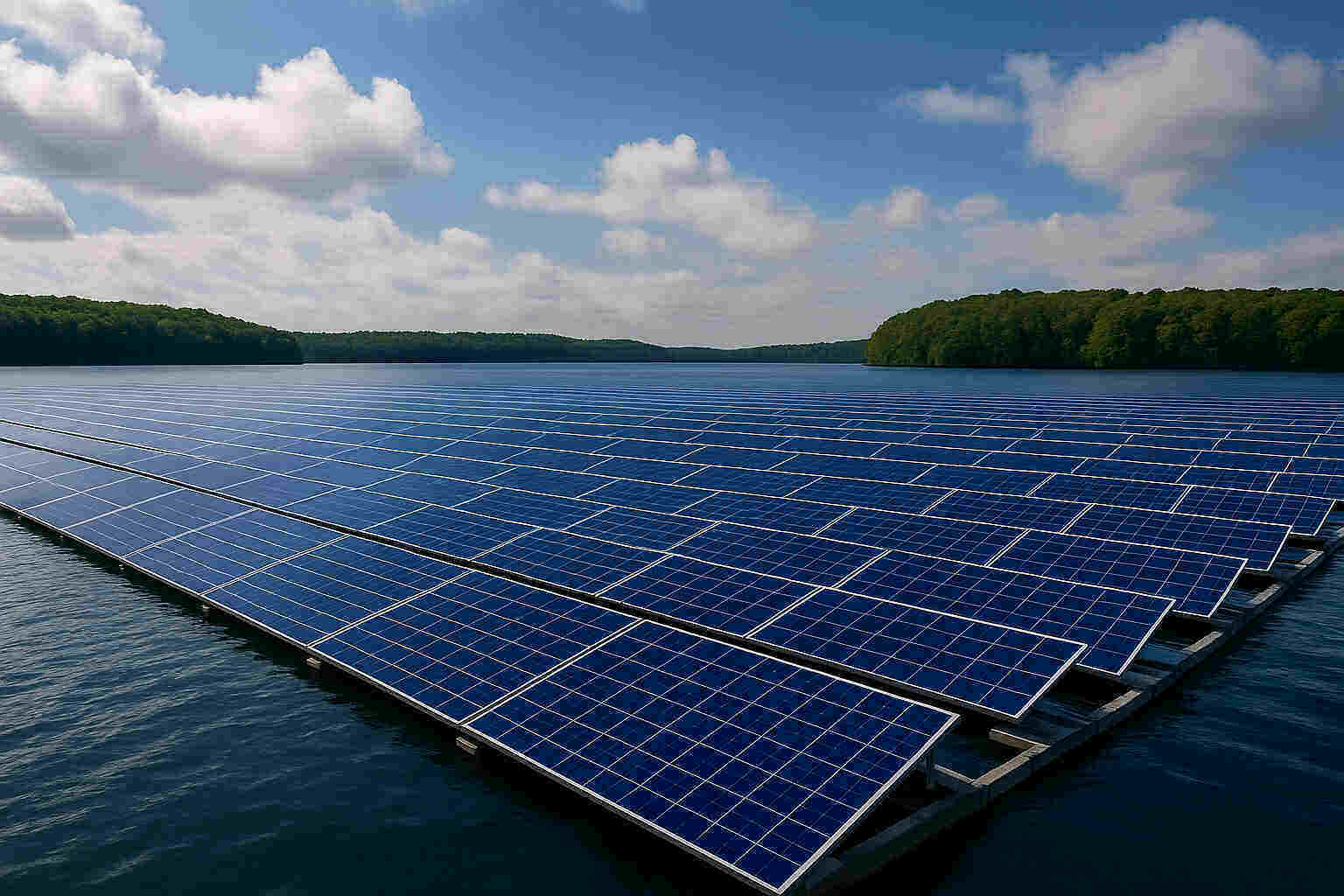
Land scarcity is a growing barrier to solar adoption, especially in densely populated regions. Enter floating solar—an elegant solution placing photovoltaic panels on reservoirs, lakes, or even coastal waters. Besides conserving precious land, floating solar systems also help minimize water evaporation and keep solar panels cooler, which boosts their efficiency.
China’s floating solar power plant in Anhui province, with a capacity of 320 MW, ranks among the world’s largest and highlights the potential scale of this technology. Meanwhile, Southeast Asia is embracing floating solar to offset land constraints and combat rising energy demands.
Floating solar also pairs well with hydropower dams, leveraging existing grid infrastructure while providing clean power during dry seasons. The synergy between hydropower’s dispatchable energy and solar’s variability can stabilize renewable integration into the grid.
Check out this World Bank report on floating solar potential.
3. Solar Skin Technology
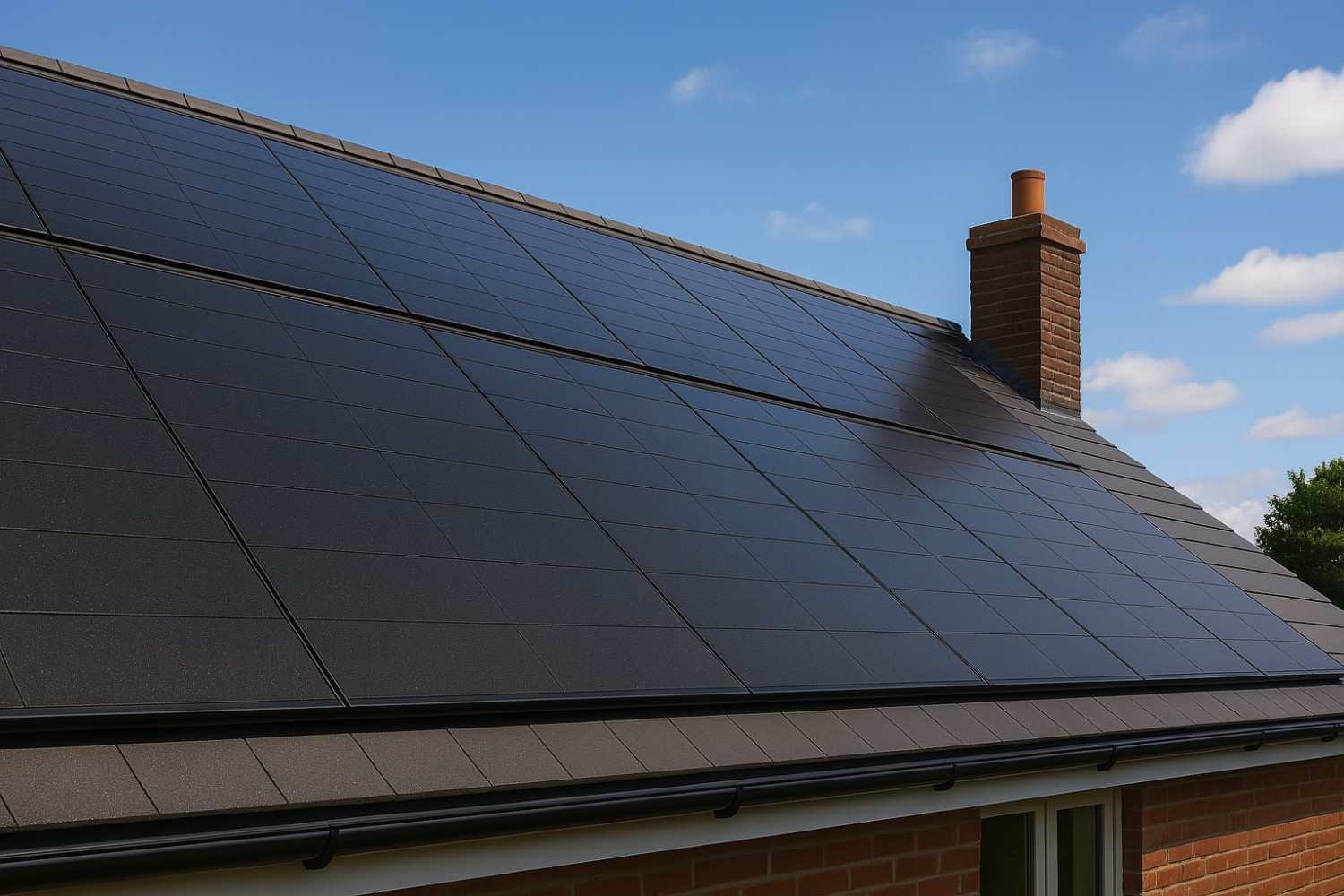
Solar skin panels blend aesthetics with sustainability, offering a game-changing solution for homeowners hesitant about traditional panels’ appearance. This technology uses thin, customizable films that allow panels to match a roof’s color or display images without significantly compromising efficiency.
U.S. company Sistine Solar has pioneered this concept, developing skins that blend seamlessly with shingles, tiles, or metal roofing. While there’s a small efficiency penalty (5-10% less than regular panels), the appeal to customers prioritizing aesthetics could unlock broader residential adoption.
Imagine historic districts or design-conscious neighborhoods finally embracing solar power because the panels no longer clash with architectural heritage.Solar skins are transforming not only how we generate energy, but also the appearance of urban and suburban environments
You can find more information about solar skins on Sistine Solar’s website.
4. Green Hydrogen Production via Electrolysis
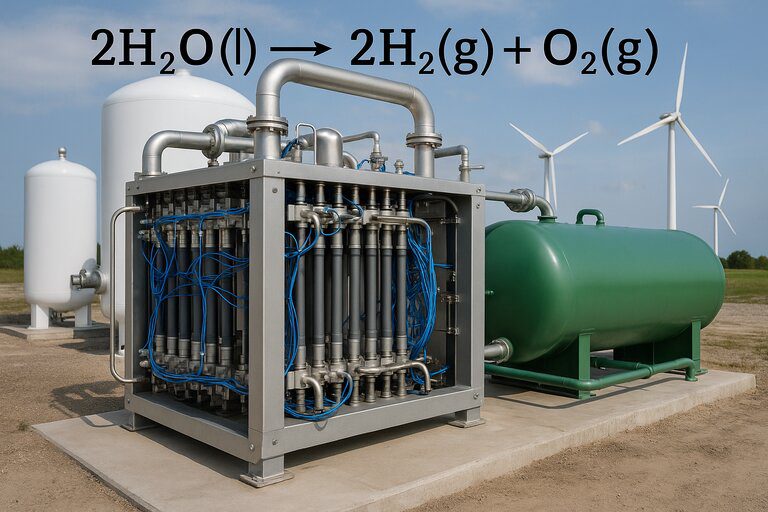
Hydrogen has long been hailed as the fuel of the future, but traditionally it’s produced from fossil fuels. The new frontier is “green hydrogen,” created by splitting water into hydrogen and oxygen using renewable electricity. This clean hydrogen can fuel vehicles, decarbonize industrial processes, and store excess renewable power.
Companies like Nel Hydrogen and ITM Power are scaling electrolyzer manufacturing to lower costs. Europe’s Hydrogen Strategy aims to produce 10 million tons of green hydrogen annually by 2030, underscoring hydrogen’s pivotal role in decarbonization.
While challenges remain—such as high costs and infrastructure gaps—the technology is progressing rapidly. For instance, Iberdrola and Fertiberia in Spain have launched one of Europe’s largest green hydrogen facilities for ammonia production, signaling industrial-scale feasibility.
Explore more in this International Energy Agency report on hydrogen.
5. Hydrogen Fuel Cell Vehicles
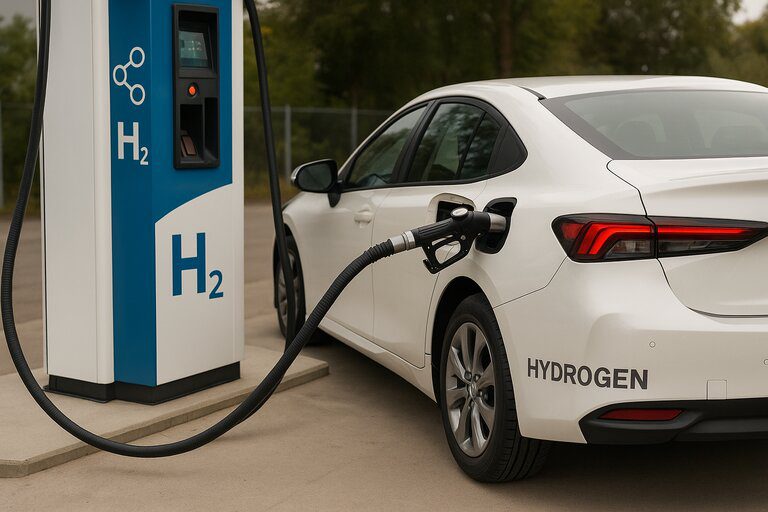
Electric vehicles (EVs) dominate green mobility headlines, but hydrogen fuel cell vehicles (FCVs) offer unique advantages, especially for heavy-duty transport. Fuel cell vehicles (FCVs) generate electricity from hydrogen through fuel cells, producing only water vapor as an emission
Unlike battery EVs, hydrogen vehicles can refuel in minutes and achieve ranges exceeding 300 miles, making them ideal for commercial fleets, buses, and even trains. Toyota’s Mirai and Hyundai’s NEXO are examples of fuel cell vehicles aimed at consumers, while companies like Nikola and Hyundai are working on hydrogen-powered trucks to help reduce emissions in freight transportation.
The primary hurdle is hydrogen infrastructure, but initiatives in California, Germany, and South Korea are steadily expanding refueling networks.
Learn more about fuel cell vehicles from the U.S. Department of Energy.
6. Hydrogen Blending in Natural Gas Grids

One transitional use of green hydrogen is blending it into existing natural gas pipelines. Up to ~20% hydrogen can mix with methane without significant changes to infrastructure, reducing the carbon intensity of heating and industrial fuel. Such systems provide clean, local energy with minimal grid reliance—vital for islands, remote communities, or critical infrastructure.
Countries like the UK, Germany, and Australia are piloting hydrogen blending projects to decarbonize residential heating while developing a pure hydrogen grid for future applications. Japan’s Fukushima Hydrogen Energy Research Field exemplifies how hydrogen can integrate renewables into resilient, distributed grids.
Hydrogen microgrids combine solar, wind, or other renewables with hydrogen storage and fuel cells. During surplus generation, excess power produces hydrogen via electrolysis. When renewable energy generation declines, fuel cells transform stored hydrogen into electricity.
Blending also helps create early demand for green hydrogen, scaling production, and lowering costs. However, challenges include safety standards, pipeline materials compatibility, and potential impacts on appliances.
Explore further insights in the Hydrogen Council’s analysis on hydrogen blending.
7. Solid-State Hydrogen Storage
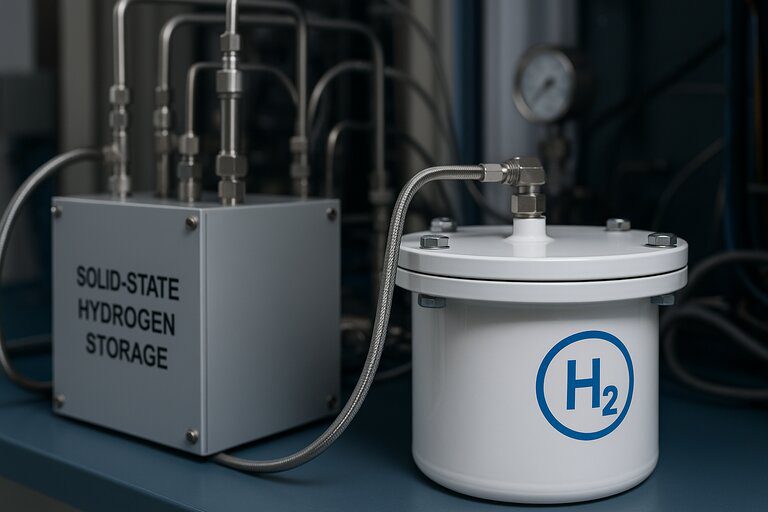
Hydrogen’s low density poses logistical challenges, but new storage technologies promise safer, more efficient solutions. One breakthrough involves solid-state storage, where hydrogen chemically binds to materials like metal hydrides. Compared to high-pressure gas tanks, these systems achieve higher hydrogen storage capacity in terms of both weight and volume.
Companies such as GKN Hydrogen are developing storage units suitable for buildings, industrial facilities, or renewable energy buffering. Solid-state solutions are less prone to leaks and require lower pressures, enhancing safety.
This technology has the potential to support decentralized hydrogen storage for applications like microgrids, backup power, and transport hubs, helping make hydrogen a more viable fuel option.
Read further at GKN Hydrogen’s technology overview.
8. Small Modular Fusion Reactors
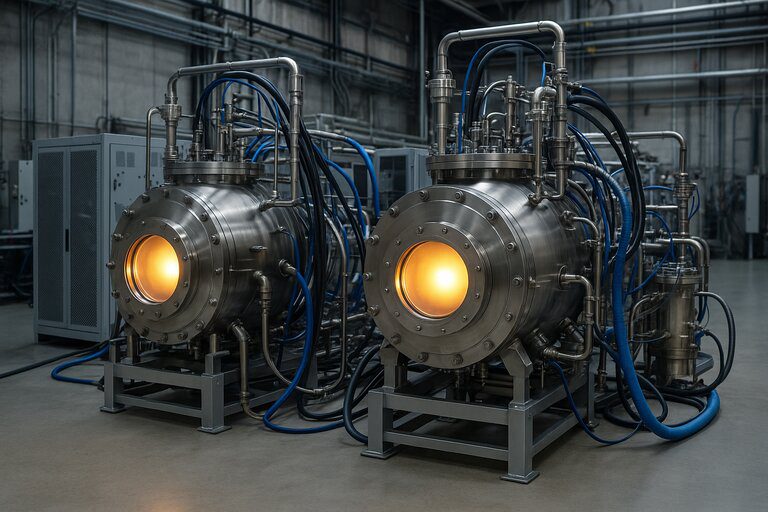
Nuclear fusion, which replicates the Sun’s way of producing energy, is considered the ultimate goal for achieving clean power. While large projects like ITER dominate headlines, smaller ventures are racing to commercialize fusion sooner with compact reactor designs.
Companies like Commonwealth Fusion Systems (CFS) and TAE Technologies are developing high-temperature superconducting magnets and innovative reactor concepts. CFS aims for a pilot plant delivering net power in the early 2030s—a timeline far shorter than traditional fusion mega-projects.
If successful, these small modular reactors could produce near-limitless power with zero carbon emissions and minimal radioactive waste. Though still experimental, fusion startups are attracting billions in private investment.
Read more about CFS’s approach in this MIT News article.
9. Fusion Energy from Laser Inertial Confinement

Another path to fusion energy involves laser-driven systems rather than magnetic confinement. Facilities like the National Ignition Facility (NIF) in California use powerful lasers to compress a fuel pellet until it fuses.
In December 2022, NIF achieved a historic milestone by producing more energy from fusion than was absorbed by the fuel—a crucial proof-of-concept. While the system still consumes much more energy overall, it’s a pivotal step toward laser-based fusion power plants.
Inertial confinement fusion could yield smaller, scalable plants ideal for decentralized power grids. However, significant engineering hurdles remain before commercialization.
Read more at Lawrence Livermore National Laboratory’s fusion page.
10. Solar Hydrogen Generation via Photoelectrolysis
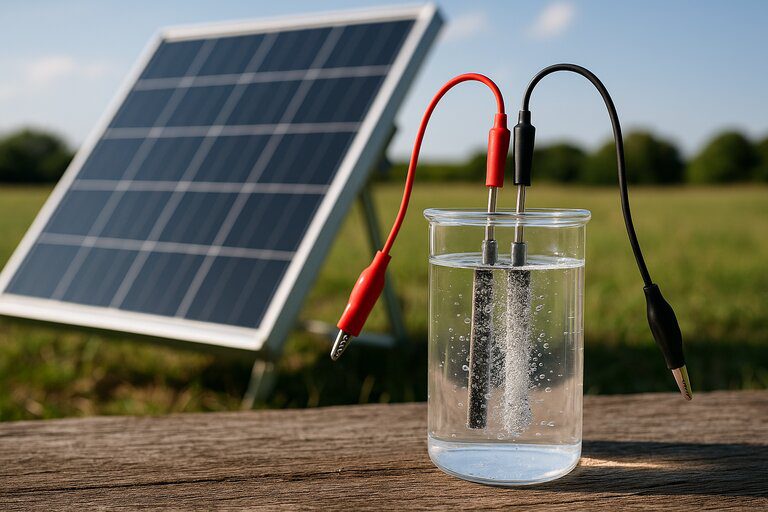
A fascinating fusion of solar and hydrogen technologies is photoelectrochemical (PEC) water splitting. Instead of converting sunlight to electricity first, PEC cells directly split water into hydrogen and oxygen when illuminated.
This method can help decrease energy losses and streamline hydrogen production. Research labs worldwide are developing durable, efficient materials like metal oxides or semiconductor nanostructures for PEC systems.
Though still early-stage, PEC hydrogen could enable decentralized hydrogen production using sunlight alone—ideal for remote locations or developing nations.
Read more in this Nature review article on PEC water splitting.
11. Transparent Solar Panels
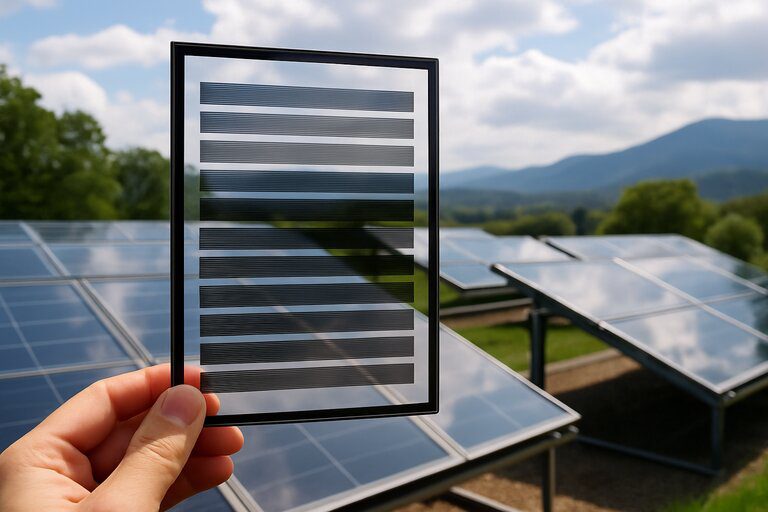
Transparent solar panels transform windows and glass facades into clean energy generators. Scientists at Michigan State University have developed transparent luminescent solar concentrators capable of capturing invisible ultraviolet and infrared light while allowing visible light to pass through.
Buildings with transparent solar windows could significantly reduce electricity consumption without sacrificing aesthetics or natural light. Combined with building-integrated photovoltaics, this technology is key for urban sustainability.
Commercial adoption faces hurdles in efficiency and cost, but prototypes are advancing steadily, with companies like Ubiquitous Energy pushing toward market readiness.
Learn more from Michigan State University’s transparent solar research.
12. Advanced Solar Thermal Storage
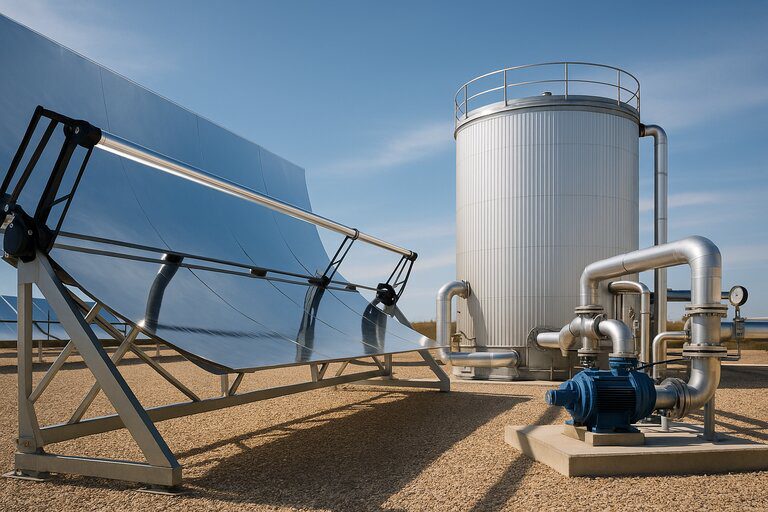
Unlike photovoltaics, solar thermal systems concentrate sunlight to produce heat, which can be stored and used to generate electricity later. Molten salt storage is a leading solution, keeping heat for up to 10-15 hours after sunset.
Spain’s Gemasolar plant was the first commercial solar thermal facility capable of generating electricity 24/7 using molten salt. This technology helps stabilize renewable grids by delivering power even when the sun isn’t shining.
Researchers are exploring new heat storage materials like solid particles or ceramic bricks that could store energy at higher temperatures, improving efficiency and reducing costs.
Read more about thermal storage from the U.S. Department of Energy.
13. Solar-Powered Desalination
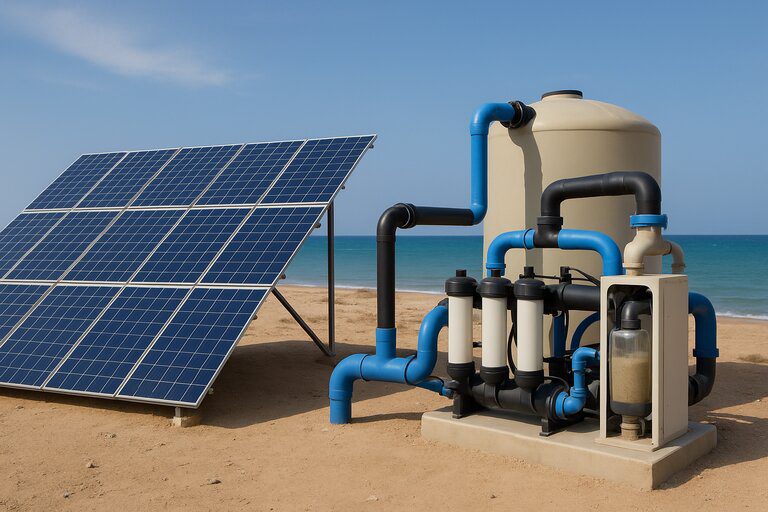
Clean water scarcity and energy demand intersect in solar-powered desalination. Traditional desalination is energy-intensive, often relying on fossil fuels. Solar thermal systems can provide heat for distillation, while solar PV powers pumps and membranes in reverse osmosis processes.
Projects in the Middle East and Australia have demonstrated solar desalination’s feasibility. For example, Saudi Arabia’s King Abdullah University of Science and Technology (KAUST) has piloted solar-powered desalination with dramatically reduced carbon footprints.
This technology offers sustainable solutions for arid regions facing water crises while harnessing abundant solar resources.
Learn more from KAUST’s desalination research.
14. Hydrogen Microgrids
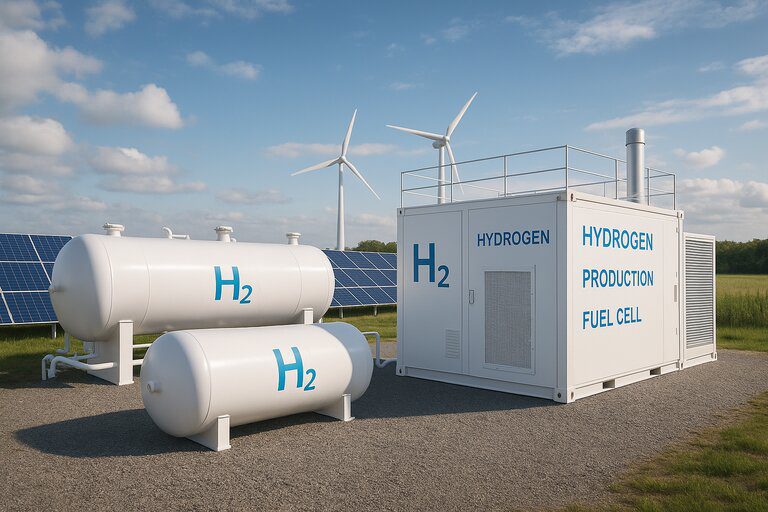
Hydrogen microgrids are small-scale energy systems that produce, store, and supply power using hydrogen as a clean fuel. Unlike traditional grids dependent on fossil fuels, hydrogen microgrids use electricity from renewables like solar or wind to split water into hydrogen and oxygen—a process called electrolysis. The hydrogen is then stored and converted back into electricity via fuel cells when needed, ensuring reliable power even when the sun doesn’t shine or the wind doesn’t blow.
These systems reduce carbon emissions and can operate independently from large utility grids, making them valuable in remote areas, disaster recovery, and sustainable cities. Real-life applications include powering remote telecom towers, emergency hospitals, and eco-friendly housing. As technology improves and costs drop, hydrogen microgrids offer a practical path toward greener, more resilient energy solutions.
More insights from the U.S. Department of Energy.
15. Fusion-Powered Space Propulsion

Beyond Earth, fusion promises to revolutionize space travel. Fusion rockets have the potential to produce higher thrust and better efficiency than chemical propulsion, significantly reducing travel times between planets. This could make missions to Mars and beyond more feasible for human exploration.
Projects like Princeton Satellite Systems’ Direct Fusion Drive propose compact reactors to provide both propulsion and onboard power. Such technology could allow for faster missions and increased payload capacity.
While fusion propulsion remains conceptual, progress in terrestrial fusion technology could unlock space applications sooner than expected.
Learn more about fusion propulsion from NASA’s technical papers on advanced propulsion concepts.
Disclaimer: The details shared in this article are intended solely for informational purposes and do not represent financial or engineering advice.. Readers should conduct further research and consult relevant experts before making decisions related to green energy investments or implementations.

